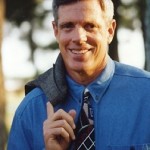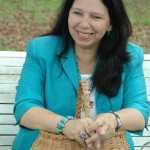Over spring break, I participated in the SEEDS trip to Louisiana. The week was overwhelming, to say the least. For the first half of the trip, we worked on a number of community garden projects at the community center of the Houma Nation, a Native American tribe that’s been hard-hit not only by natural disaster, but also by government corruption and stunning corporate greed. Next we traveled to New Orleans, where we worked with Common Ground Relief rebuilding homes in the Lower 9th Ward and did some gardening and mentoring at a local elementary school. Much of the city is still devastated in the wake of Hurricane Katrina, so nature’s power to affect human livelihoods and the complexities of a society was never far from our minds there. And in Dulac, where the Houma Nation is centered, we discovered a staggeringly intricate network of relationships between the tribe and its environment, especially as oil companies threaten to alter that habitat irrevocably. From each of these communities, and even more so in drawing comparisons between them, we learned just how fully and unavoidably a society is tied to its physical place, and what significant effects these forces can have on one another’s well-being. One conversation that particularly struck me in environmental terms was our visit with Brenda, the Houma Nation’s former chief, and her husband Dr. Mike, who has treated numerous patients in the Gulf area with oil spill-related health issues.
The Houma Nation has been established for hundreds of years in the bayou region, but the U.S. government still denies them federal recognition as a tribe. This means they have no recourse against the oil companies that have for decades been exploiting the Nation’s rich coastal resources, with no apparent regard for the economic and bodily well-being of the communities whose environment they disrupt. Dr. Mike spoke at length about the medical ramifications of the massive BP oil spill in 2010, which he’s still delving further and further into. He’s seen over a hundred patients so far who exhibit what he calls the “BP syndrome.” Symptoms can include memory loss, skin disorders, seizures, loss of muscle control, and the collapse of just about every major system in the body (endocrine, digestive, circulatory, nervous, and the list goes on). He spends year after frustrating year seeking to win some measure of legal and financial recourse for his patients, whose conditions he’s certain stem from BP’s irresponsibility in managing the spill. But so far, not one of the victims has seen a dime of aid, nor have the many Houma members whose livelihoods in the fishing industry were temporarily or permanently destroyed by the spill.
I was inspired not only by Brenda and Dr. Mike’s selfless determination in fighting for a voice for their tribe, but also by their unwavering hope in the face of such shocking corruption. “I’m not jaded,” Dr. Mike said, though he has every reason to be. “If I got jaded, I’d lose everything.” For those who understand the devastating effects an injured habitat can have on a human community, bureaucracy and apathy from the government and corporations can make the fight for a healthy environment feel hopeless. But community members like Brenda and Dr. Mike remind me that a continued effort for environmental justice is essential and, with enough voices behind it, is bound to succeed.
-
Recent Posts
- Third CBL Post
- Empowering Environmental Stewardship Through Transformational Leadership (Synthetic Observation Log 2)
- Motivating Collective Actions To Improve Our Watershed’s Resilience (Synthetic Post 2)
- Second Synthetic Observation Log
- Reflecting on the Past, Present, and Future of the James River(Synthesis Post #2)
Categories
- Community Based Learning (81)
- Gambles Mill Trail (15)
- HJA (1)
- Lit Circle (14)
- Lodge Life (1)
- Portlandness (1)
- Reflection Spot (109)
- Synthesis (93)
- Trips (20)
- Uncategorized (203)
- Westhampton Lake (23)
Log In


